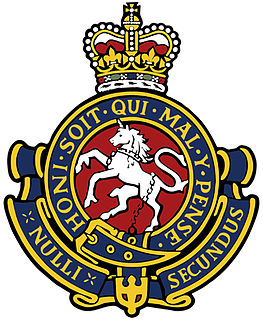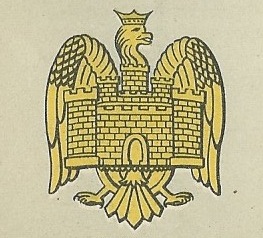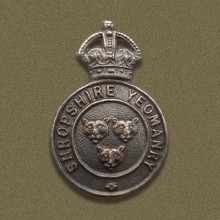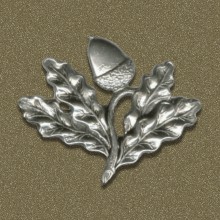
Trooping the Colour is a ceremony performed by regiments of the British Army. It has been a tradition of British infantry regiments since the 17th century, although its roots go back much earlier. On the battlefield, a regiment's colours, or flags, were used as rallying points. Consequently, regiments would have their ensigns slowly march with their colours between the ranks to enable soldiers to recognise their regiments' colours.

In some militaries, foot guards are senior infantry regiments. Foot guards are commonly responsible for guarding royal families or other state leaders, and they also often perform ceremonial duties accordingly, but at the same time are combat soldiers.

"Other ranks" is the term used to refer to all ranks below officers in the British Army and the Royal Marines. It includes warrant officers, non-commissioned officers ("NCOs") and ordinary soldiers with the rank of private or regimental equivalent. Officers may, in speaking, distinguish themselves from those "in the ranks".

The Governor General's Horse Guards is an armoured reconnaissance regiment in the Primary Reserve of the Canadian Army, part of 4th Canadian Division's 32 Canadian Brigade Group. Based in Toronto, it is the most senior reserve regiment in Canada, and the only household cavalry regiment of Canada's three household units.

The Life Guards (LG) is the senior regiment of the British Army and part of the Household Cavalry, along with the Blues and Royals.

The 1st Regiment of Life Guards was a cavalry regiment in the British Army, part of the Household Cavalry. It was formed in 1788 by the union of the 1st Troop of Horse Guards and 1st Troop of Horse Grenadier Guards. In 1922, it was amalgamated with the 2nd Life Guards to form the Life Guards.

The Bedfordshire Yeomanry was a Yeomanry regiment of the British Army. Serving intermittently between 1797 and 1827, it was re-raised in 1901 for the Second Boer War. It participated in the First World War before being converted to an artillery regiment. It served in the Second World War. Its lineage was maintained by 201 Battery, 100th (Yeomanry) Regiment Royal Artillery until that unit was placed in suspended animation in 2014.

The 2nd Regiment of Life Guards was a cavalry regiment in the British Army, part of the Household Cavalry. It was formed in 1788 by the union of the 2nd Troop of Horse Guards and 2nd Troop of Horse Grenadier Guards. In 1922, it was amalgamated with the 1st Life Guards to form the Life Guards.

The Warwickshire Yeomanry was a yeomanry regiment of the British Army, first raised in 1794, which served as cavalry and machine gunners in the First World War and as a cavalry and an armoured regiment in the Second World War, before being amalgamated into the Queen's Own Warwickshire and Worcestershire Yeomanry in 1956. The lineage is maintained by B Squadron, part of The Royal Yeomanry.

The Guards Cavalry Division (Garde-Kavallerie-Division) was a unit of the Prussian Army that was stationed in Berlin. The division was a part of the Guards Corps (Gardekorps).

The Shropshire Yeomanry was a yeomanry regiment of the British Army, first raised in 1795, which served as a cavalry and dismounted infantry regiment in the First World War and as a cavalry and an artillery regiment in the Second World War. It was then amalgamated with the Shropshire Royal Horse Artillery.

The South Nottinghamshire Hussars is a unit of the British Army formed as volunteer cavalry in 1794. Converted to artillery in 1922, it presently forms part of 103 Regiment, Royal Artillery.

The Lincolnshire Yeomanry was a volunteer cavalry unit of the British Army formed in 1794. It saw action in the Second Boer War and the First World War before being disbanded in 1920.

The Hampshire Yeomanry was a yeomanry cavalry regiment formed by amalgamating older units raised between 1794 and 1803 during the French Revolutionary Wars. It served in a mounted role in the Second Boer War and World War I, and in the air defence role during and after World War II. The lineage is continued by 295 Battery and 457 Battery, batteries of 106 (Yeomanry) Regiment Royal Artillery, part of the Army Reserve.
The West Somerset Yeomanry was a Yeomanry regiment of the British Army. First raised in 1794, it participated in the Second Boer War and World War I before being converted to an artillery regiment. It served in World War II. Post-war it was gradually reduced in strength until the yeomanry lineage of the successor unit was discontinued on 9 November 1988.

The Household Battalion was an infantry battalion of the British army during the Great War. It was formed in September 1916 from the reserves of the Household Cavalry regiments to help fill the every-increasing demands for infantry on the Western Front. Considerable effort was expended in the conversion of cavalrymen into footsoldiers trained and equipped for trench warfare. The battalion spent its entire existence on the Western Front as part of the 4th Infantry Division, arriving as the Battle of the Somme was ending in early December 1916. It fought in the Battle of Arras and later at Third Ypres, suffering severely in the assault on Poelcappelle. Its last major engagement was the defence of Bourlon Ridge during the Battle of Cambrai in late 1917. By this time, it had become apparent that there were insufficient reserves to support all the Household Cavalry regiments that had been converted to infantry and it was disbanded as part of a general reorganization in February 1918.

The 2nd Cavalry Division was a unit of the German Army in World War I. The division was formed on the mobilization of the German Army in August 1914. The division was disbanded in 1919 during the demobilization of the German Army after World War I.

The 4th Cavalry Division was a unit of the German Army in World War I. The division was formed on the mobilization of the German Army in August 1914. The division was disbanded in 1919 during the demobilization of the German Army after World War I.
The Kent Cyclist Battalion was a bicycle infantry battalion of the Territorial Force, part of the British Army. Formed in 1908, it was sent to India in the First World War and saw active service during the Third Anglo-Afghan War in 1919. In 1920, it was converted as part of the Royal Artillery.
T Battery Royal Artillery is an air defence battery of the Royal Artillery that serves with the British Army's 12 Regiment Royal Artillery. It is stationed at Baker Barracks, Thorney Island, West Sussex.















